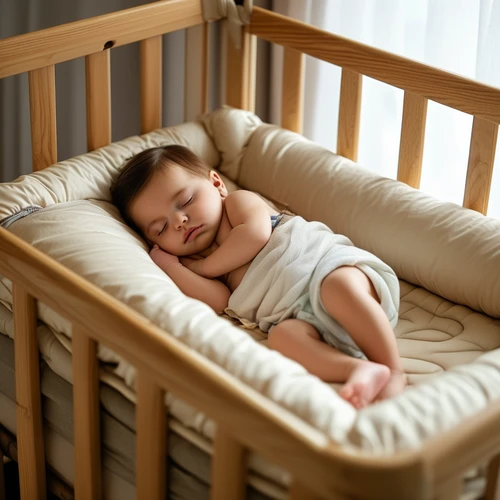Choosing a Safe Crib Mattress for Your Baby: A Guide to Peace of Mind
The safety and well-being of your baby is paramount, especially when it comes to sleep. One crucial aspect that often gets overlooked is the crib mattress. Selecting the right one can significantly reduce the risk of suffocation, SIDS (Sudden Infant Death Syndrome), and other sleep-related incidents. Here's a comprehensive guide to help you make an informed decision.
Understanding Crib Mattress Standards
The U.S. Consumer Product Safety Commission (CPSC) has established strict guidelines for crib mattresses, including minimum and maximum dimensions to ensure a snug fit in standard-sized cribs. A mattress should be less than 6 inches thick to prevent suffocation hazards.
Firmness: The Most Important Attribute
A firm surface is critical for your baby's safety as it reduces the risk of suffocation and SIDS. Soft mattresses pose a significant danger, with research showing that infants who sleep on soft surfaces are at higher risk for these deadly incidents.
When shopping, press your hand into the mattress - if there's noticeable indentation or sinking, it isn't firm enough. A thin layer of padding topped by some form of vapor barrier offers the requisite firmness without risking comfort.
Breathable Materials and Ventilation
New technologies are making breathability a key factor in choosing crib mattresses. These products come with specialized fabric designed to dissipate heat, prevent overheating, and ensure proper ventilation around the baby.
Cotton batting is generally safer than synthetic materials due to its natural flame resistance properties and ability to reduce the risk of mold or bacterial growth. Some manufacturers also offer "dual-sided" mattresses that transition from firm for babies to slightly softer for toddlers.
Avoiding Dangerous Chemicals
Many crib mattresses can emit volatile organic compounds (VOCs), posing potential dangers when the mattress is new. Look for certification labels such as CertiPUR-US, Oeko-Tex Standard 100, Greenguard Gold or other recognized eco-label programs indicating that harmful chemical levels are within acceptable limits.
Choosing Organic Options
Many parents opt for organic materials to minimize exposure to chemicals and synthetic substances. Organically grown cotton, natural wool batting, and bamboo are common choices.
However, it's important to note that even with organic mattresses, firmness should still be prioritized over comfort.
Checking Water-Resistant Barriers
A waterproof cover can help protect your mattress from damage as well as prolong its life. Look for materials like polyethylene or vinyl that provide adequate protection without leaching harmful chemicals into the sleeping space.
The Bottom Line: Making an Informed Decision
Crib mattresses may seem like a minor detail, but they could be critical to your baby's safety. Firmness, breathable materials, and avoiding dangerous chemicals are essential considerations when selecting one.
When in doubt, always refer back to the CPSC guidelines or consult with your pediatrician for further advice on choosing the right crib mattress for your little one's needs.


